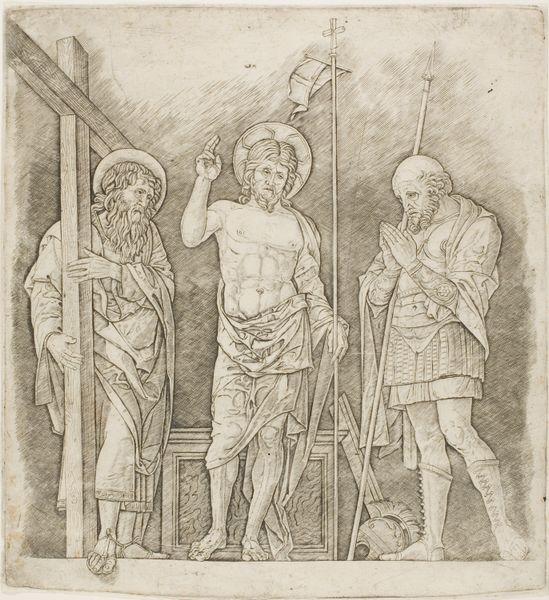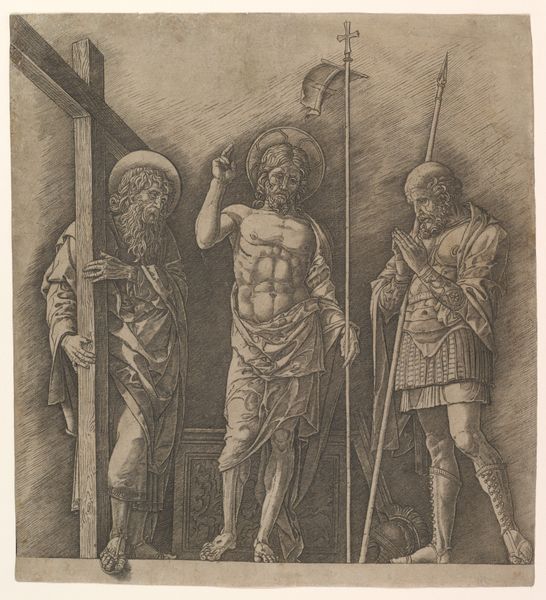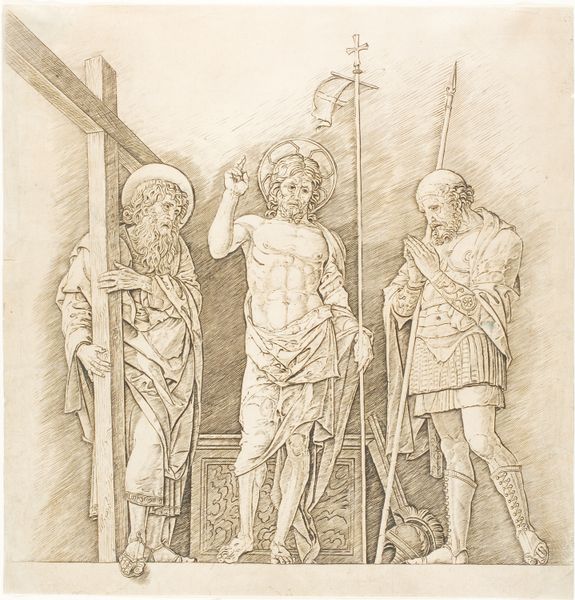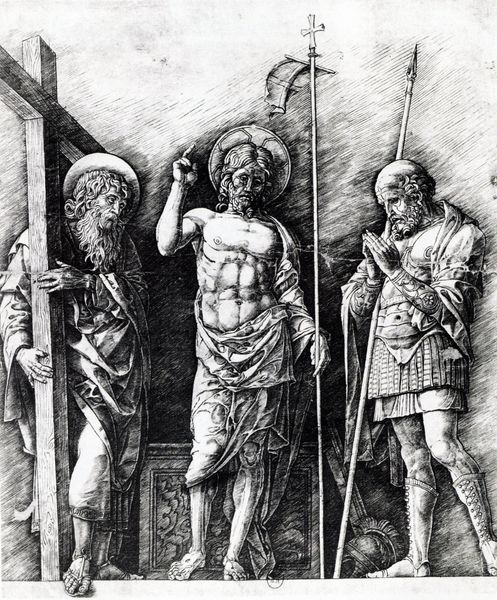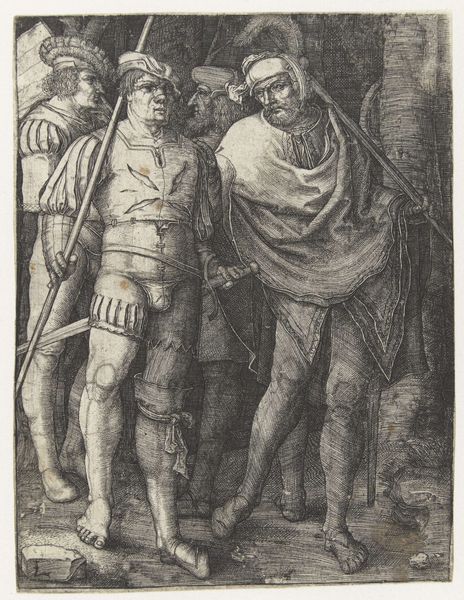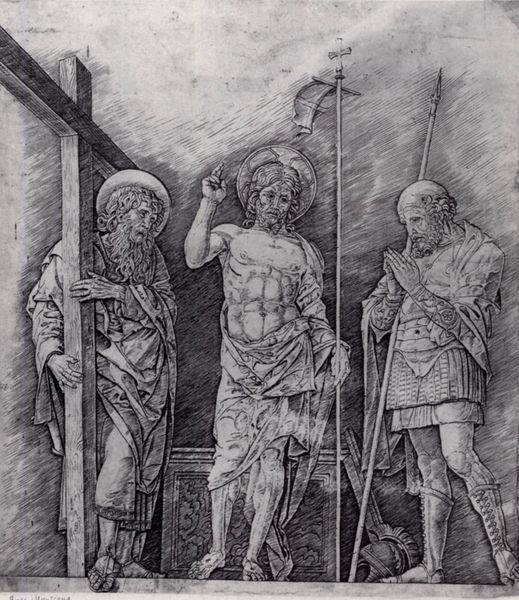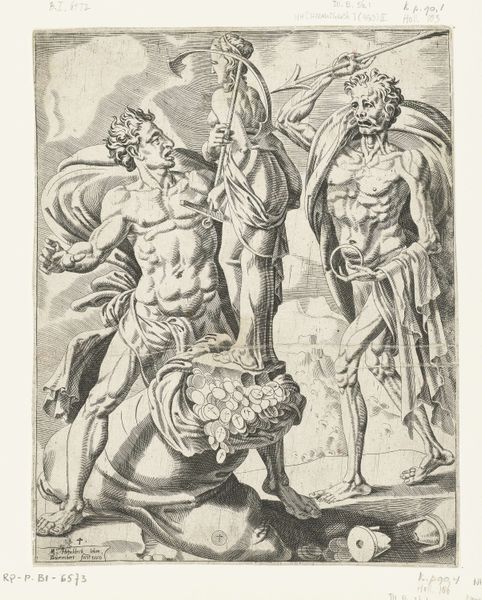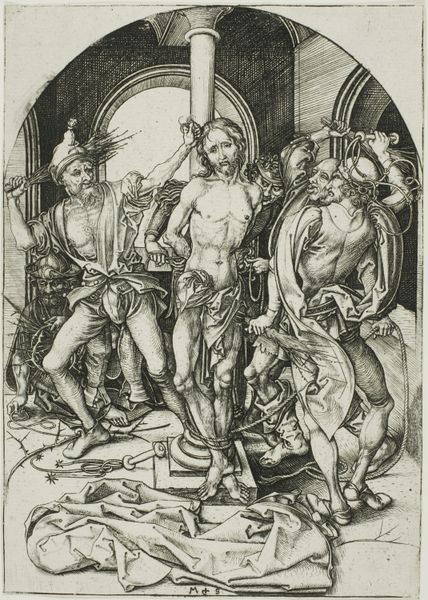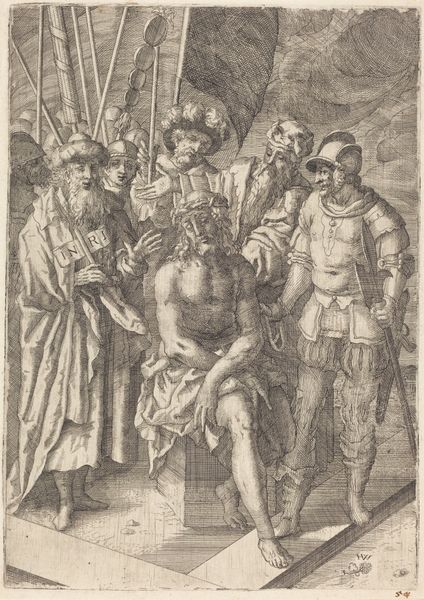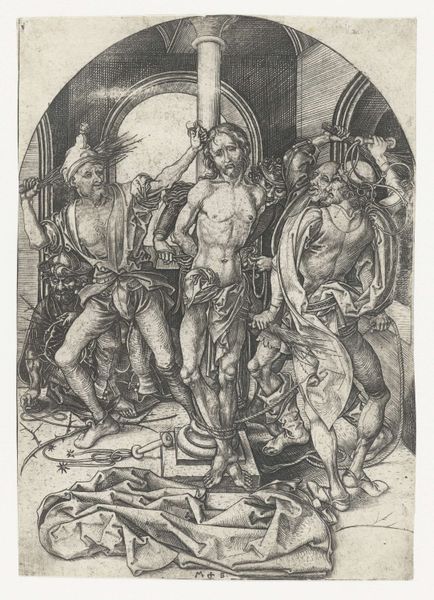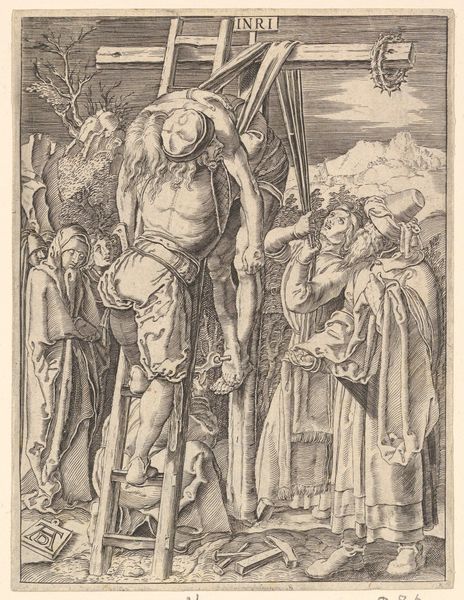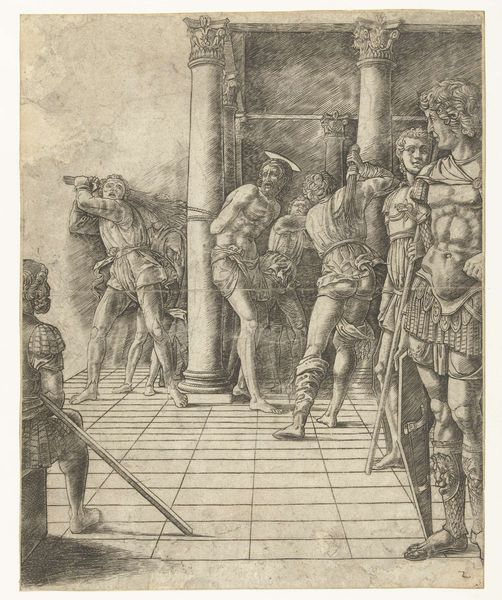
Herrezen Christus staand tussen heiligen Andreas en Longinus 1470 - 1474
0:00
0:00
engraving
#
figuration
#
line
#
history-painting
#
italian-renaissance
#
engraving
Dimensions: height 325 mm, width 288 mm
Copyright: Rijks Museum: Open Domain
Andrea Mantegna created this print, "Herrezen Christus staand tussen heiligen Andreas en Longinus," in the 15th century using the exacting method of engraving. This process involves using a tool called a burin to carve lines directly into a metal plate, which is then inked and printed. The stark contrast between the lines and the untouched paper lends a sculptural quality to the image, reminiscent of Mantegna’s work as a painter and sculptor. Note how the engraved lines define the muscular anatomy of Christ and the drapery of the surrounding figures. The texture and weight of the figures contribute to the overall gravitas of the scene. This print shows Mantegna's deep engagement with classical art, and the skilled tradition of printmaking. Beyond its aesthetic qualities, it hints at the rising demand for prints as a form of art accessible to a wider audience, reflecting broader shifts in society and artistic production. The labor-intensive nature of engraving also speaks to the value placed on skill and craftsmanship during the Renaissance. Understanding Mantegna's artistic process reveals the deep connections between material, making, and the cultural context of his time, blurring the lines between what we consider craft and fine art.
Comments
No comments
Be the first to comment and join the conversation on the ultimate creative platform.
